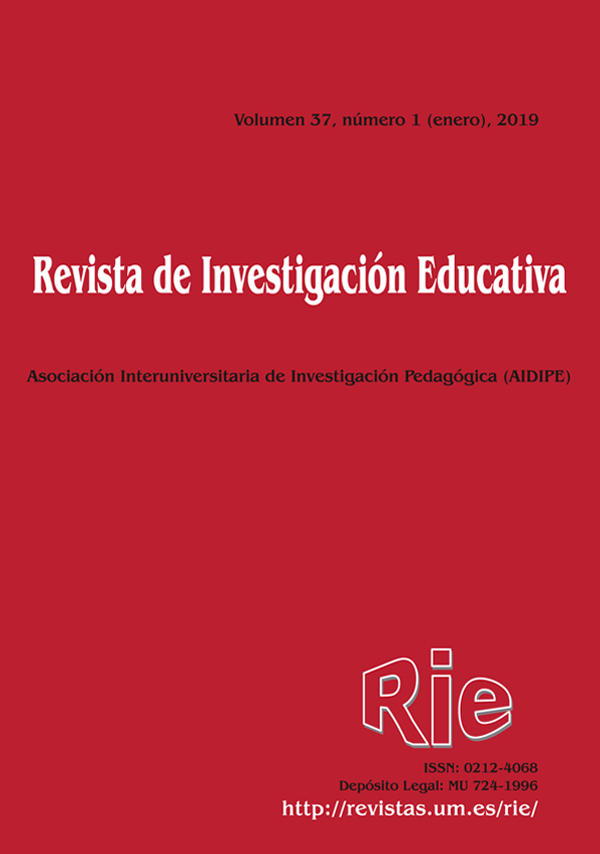Aplicación de la metodología Delphi a la identificación de factores de éxito en el emprendimiento
Supporting Agencies
- Plan Estatal 2013-2016 Excelencia. Proyectos I D. Ministerio de Economía y Competitividad.
Abstract
This research aims to identify the factors and skills associated with success in the development of an entrepeneurial project based on the opinions of entrepreneurs with experience in carrying out a business project. Delphi method has been implemented throught four phases with 15 participants from different labor sectors. For data collection, in line with Delphi method, a questionnaire has been designed taking into account participants’ answers along the reiterative process. Information has been collected on three basic aspects: factors that promote success in the initial project, skills related to it and strategies to be followed by
potential entrepeneurs. The results show that the factors, competences and recommendations related to personal characteristics are more linked to the success of the project than those related to knowledge about the topic or professional skills. The motivation to start a project, dedication, enthusiasm, time and effort are perceived as the most relevant factors to the success of the entrepreneur project.
Downloads
-
Abstract4411
-
PDF (Español (España))3850
References
Alemany, L., Álvarez, C., Planellas, M., & Urbano, D. (2011). Libro blanco de la cultura emprendedora en España. Barcelona: Fundación Príncipe de Girona/ESADE.
Bacigalupo, M., Kampylis, P., Punie, Y., & Van den Brande, G. (2016). EntreComp: The Entrepreneur-ship Competence Framework. Luxembourg: Publication Office of the European Union. http://dx.doi.org/10.2791/593884
Cabero, J., & Infante, A. (2014). Empleo del método Delphi y su empleo en la investigación en comunicación y educación. EDUTEC, Revista Electrónica de Tecnología Educativa, 48, 1-16. http://dx.doi.org/10.21556/edutec.2014.48.187
Cárdenas, A. R., & Montoro, E. (2017). Evaluación de un proyecto de educación emprendedora en la ESO. La visión del alumnado. Revista de Investigación Educativa, 35(2), 563-581. http://dx.doi.org/10.6018/rie.35.2.273221
Davidsson, P., Delmar, F., & Wiklund, J. (2006). Entrepreneurship and the growth of firms.Cheltelham: Elgar.
Davidsson, P. (2015). Entrepreneurial opportunities and the entrepreneurship nexus: A reconceptualization. Journal of Business Venturing, 30(5), 674–695. https://doi.org/10.1016/j.jbusvent.2015.01.002
Dalkey, N., & Helmer, O. (1962). An experimental application of the Delphi method to the use of experts. California: The RAND Corporation. https://doi.org/10.1287/mnsc.9.3.458
Devece, C., Peris-Ortiz, M., & Rueda-Armengot, C. (2016). Entrepreneurship during economic crisis: success factors and paths to failure. Journal of Business Research, 69(11), 5366-5360. https://doi.org/10.1016/j.jbusres.2016.04.139
Global Entrepreneurship Monitor (2017). Global Report 2016/2017. http://www.gemconsortium.org/report/49812
Landeta, J. (2002). El método Delphi: una técnica de previsión para la incertidumbre. Barcelona: Ariel.
Leiva, J. (2013). ¿Quién crea MIPYMES en Costa Rica? Tec Empresarial, 7(2), 9-17. http://dx.doi.org/10.18845/te.v7i2.1509
Ley Orgánica 8/2013, de 9 de diciembre, para la mejora de la calidad educativa. Boletín Oficial del Estado, núm. 295, de 10 de diciembre de 2013, pp. 97858-97921. http://www.boe.es/boe/dias/2013/12/10/pdfs/BOE-A-2013-12886.pdf
López Gómez, E. (2018). El método Delphi en la investigación actual en educación: una revista teórica y metodológica. Educación XXI, 21(1), 17-40. https://dx.doi.org/10.5944/educXX1.15536
Messina, M., & Hochsztain, E. (2015). Factores de éxito de emprendimiento: un estudio exploratorio con base en técnicas de Data Mining. Tec Empresarial, 9(1), 31-40. http://dx.doi.org/10.18845/te.v9i1.2206
Ministerio de Economía, Industria y Competitividad (2017). Cifras PyME. Datos Noviembre 2017: informe español. Madrid: Secretaría general de industria de y la pequeña y mediana empresa. http://www.ipyme.org/Publicaciones/ Cifras_PYME_noviembre2017.pdf
Partida, A., Carrera, M. M., & Villarreal, L. A. (2012). Análisis de las motivaciones, factores de éxito y obstáculos al espíritu empresarial: estudio comparativo entre México, EEUU y Turquía. Innovaciones de Negocios 9(18), 207-231.
Pellicer, C. (2014). El emprendedor, ¿nace o se hace? Cómo educar el talento emprendedor. Padres y maestros, 355, 6-10.
Porras, J. A., Oliveras, G., & Vigier, H. P. (2013). Probabilidades de éxito para la creación de empresas: implicaciones sobre la educación emprendedora. Revista FIR, FAEDPYME International Review, 2(4), 42-48.
Red GEM España Observatorio del Emprendimiento (2017). Global entrepreneurship monitor. Informe España, 2016. Santander: Editorial de la Universidad de Cantabria http://www.gem-spain.com/wp-content/uploads/2015/03/Informe- GEM2016.pdf
Reguant-Álvarez, M., & Torrado-Fonseca, M. (2016). El método Delphi. REIRE, Revista d’Innovació i Recerca en Educació, 9(1), 87-102. https://doi.org/10.1344/reire2016.9.1916
Sastre, R. (2013). La motivación emprendedora y los factores que contribuyen con el éxito del emprendimiento. Revista Ciencias Administrativas. FCE. UNLP, 1(1), 1-10.
Van Hemmen, S., Urbano, D., & Álvarez, C. (2013). Charismatic leadership and entrepreneurial activity: an empirical analysis. Innovar, 23(50), 53-66.
Vargas, M. (2010). Emprendimiento y liderazgo. Revista Académica e Institucional, 87, 65-72.
Wang, Y. L., Ellinger, A. D., & Jim Wu, Y. C. (2013). Entrepreneurial opportunity recognition: An empirical study of R&D personnel. Management Decision, 51(2), 248–266. https://dx.doi.org/10.1108/00251741311301803
The articles and scientific documents published in RIE abide the following conditions:
1. The Servicio de Publicaciones de la Universidad de Murcia (the publisher) has the property rights (copyright) of all the documents published and allows the reuse under the user’s license indicated in point 2.
2. All documents are published in the digital edition of RIE under a Creative Commons Reconocimiento-NoComercial-SinObraDerivada 4.0 Internacional. (legal document) license. These documents can be copied, used, distributed, communicated and explained publicly if: i) the author(s) and its original source of publishing (magazine, publisher and URL of the document) are cited; ii) it is not used for commercial purpose; iii) the existence and the specifications about this license are mentioned.
3. Auto-archive’s conditions. The authors are allowed and encouraged to digitally distribute the pre-print versions (a version before evaluation) and/or post-print (a version that it is already evaluated and accepted to its publication). This promotes circulation and distribution earlier and can increase the citations and significance within the academic community.









